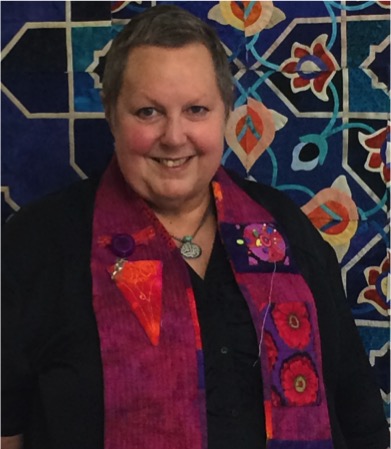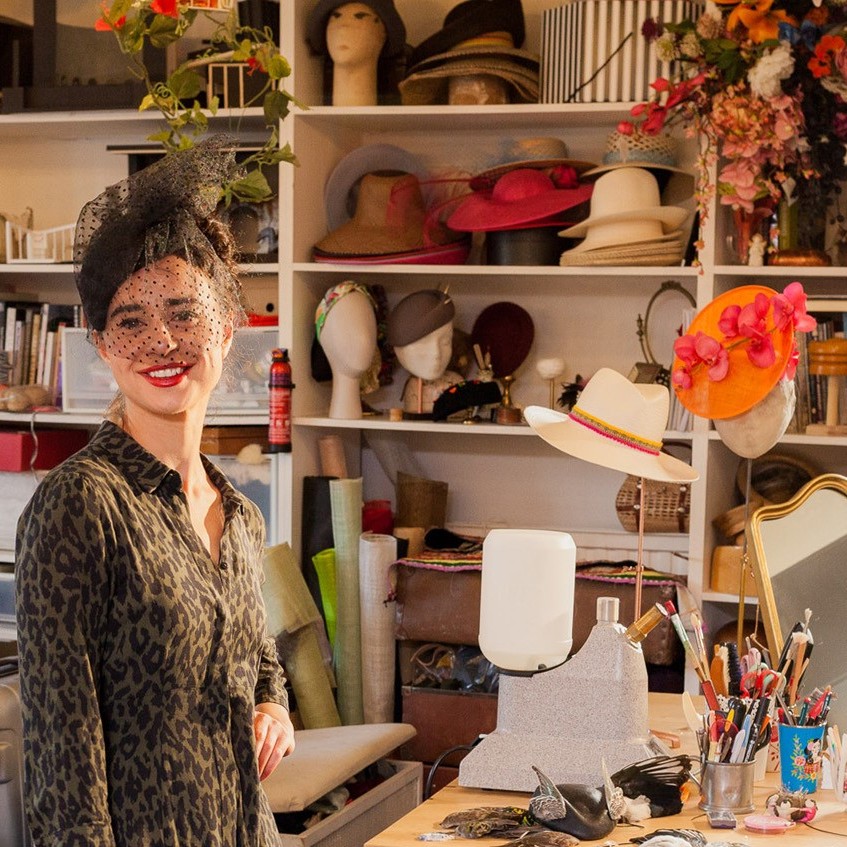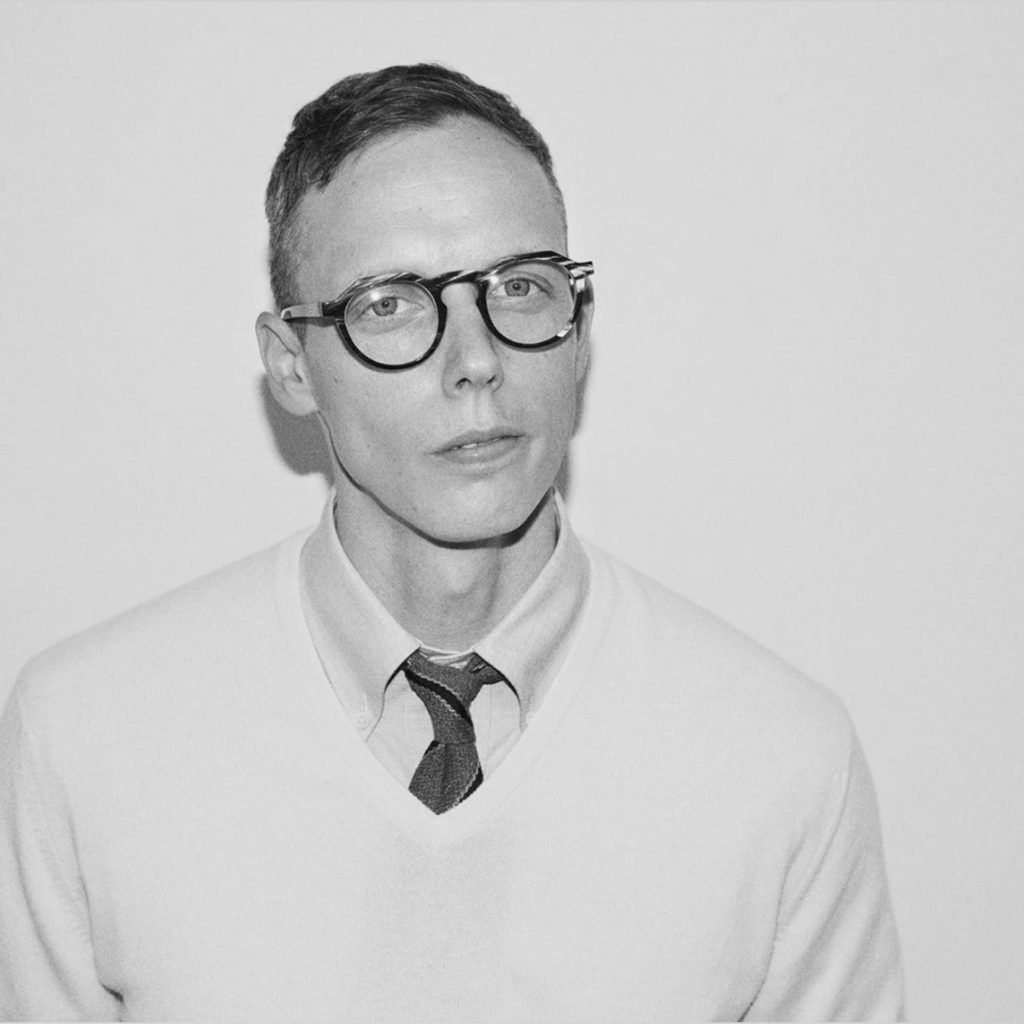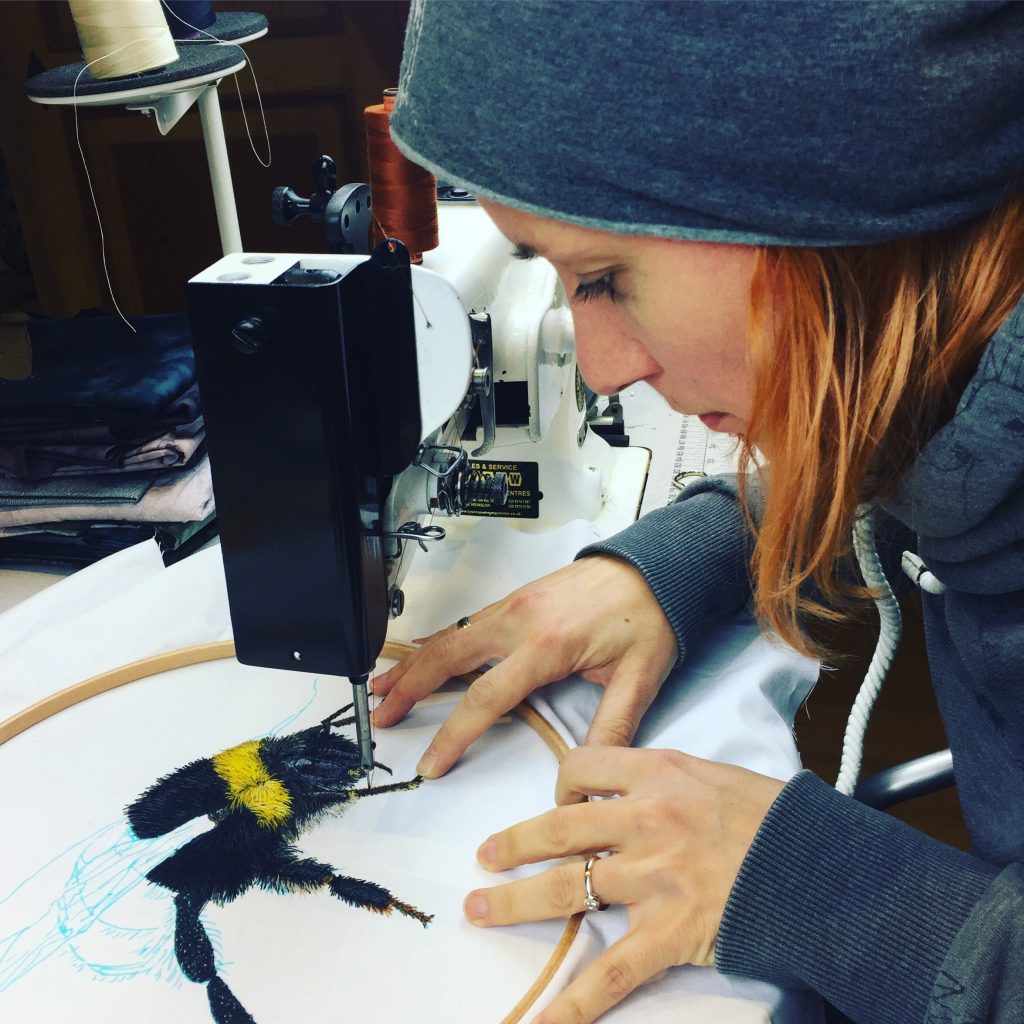Jenny Bowker Quilt Artist - Canberra, Australia
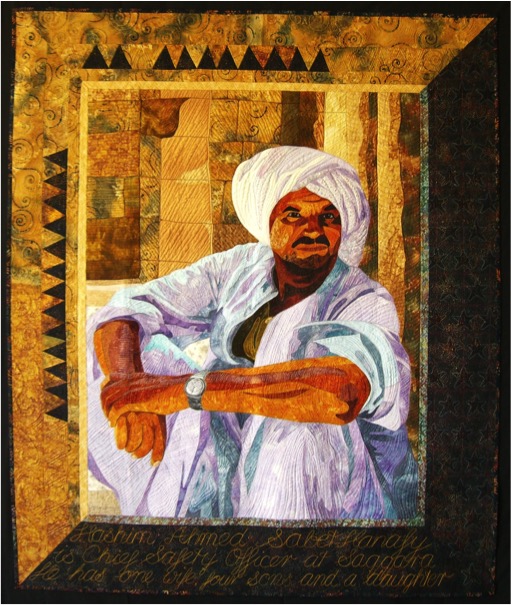
‘Hashim’ – image by Patricia Bolto
Can you discuss your former training in science and the direct advantages this has played in relation to patchwork?
I worked for thirteen years in the field of Electron Microscopy, first in research on bees’ eyes and how they work, then as part of a service unit doing a range of varied and interesting work.
I think the incredibly fine work we did with electron microscopy preparation works well with patchwork. We used to use a cleaned eyelash fixed to a slim glass capillary tube with dental wax to handle the slices of prepared tissue as they floated on a water bath – they were so small. Getting corners to match after this was a piece of cake! Not that I do much traditional work really – and I have relaxed a lot on how perfect work has to be.
Discuss specifically ‘Radiolarian Drift’ in relation to science?
Radiolaria are tiny protozoans that drift in the ocean, and we know them really from their skeletons. I had been working on a project identifying and photographing the skeletons and was fascinated to realise that the tiny line of foam that a wave leaves on the sand is packed with tiny lacy skeletons – constantly redrawing our coastline.
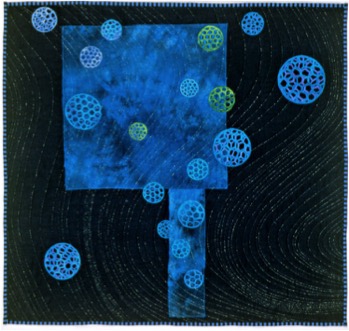
‘Radiolarian Drift’ – image Andrew Sikorski
I wanted the work to reference science but not to be too specific so it is a generic radiolarian that no-one would recognise, drifting up from the deep crevasses of the ocean. The quilting added movement and I quilted in silver. The background was a rough heavy indigo blue silk.
This piece was the first I made that melded my life in science to what I had thought of as a nice hobby.
You have spent over 15 years in Arab and Islamic countries. How has this influenced your art?
I think it has influenced my subject matter more than technique. I have made a series of quilts based on Egyptian men. They were a response to a moment of sheer frustration when a friend – no – not a friend but an acquaintance – commented on the fact that you could not trust Arabs – they were all terrorists.
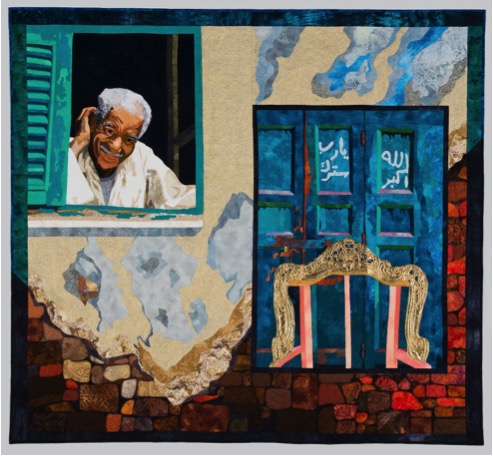
‘Abu Ali and the Gilded Chairs’
I realised that I could talk my head off. I told people how gentle and kind most Arabs were, how they were generous beyond reason even when they had nothing, how they would drop all walls when they decided that you were a friend, and that friendship would last for life, and how in Egypt particularly, they struggled to make the best of the level of income they had because they truly believed that it was their task to make the best life they could within their means. The talking had little effect.
David Shipler, in Arab and Jew, Wounded Spirits in a Promised Land, wrote “They will not find peace in treaties or in victories. They will find it, if they find it at all, by looking into each other’s eyes.”
I decided to work in ways that showed men with their work, and men who were straight and honest and kind, and who were proud of what they did. I have always loved watching people work when they are truly competent. They had to be photo-real so you could see their expressions and look into their eyes.
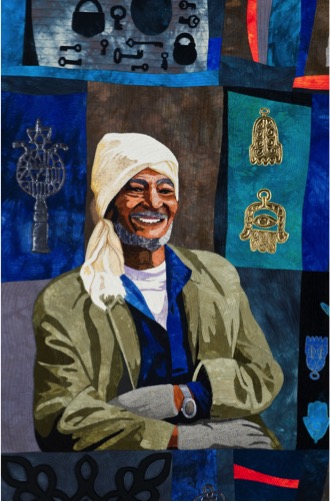
‘Hashim, Ittayer and the Friday Market’
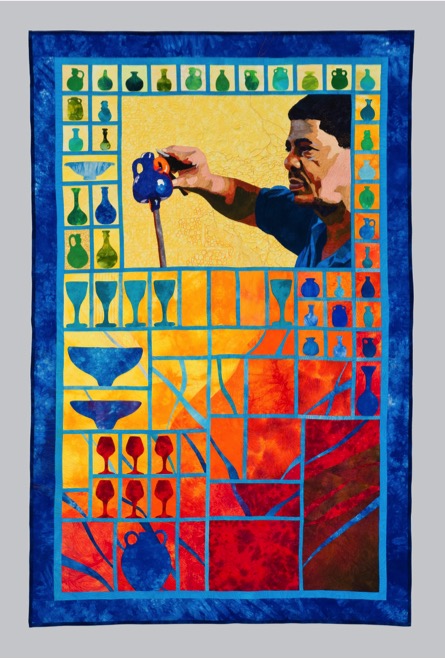
‘Hassan and the Glass’
You have taught in over 22 countries. Can you discuss some of the similarities?
Usually I am working with women and women’s issues are the same worldwide. Family and children usually come first, then work if they have it, then a hobby like patchwork. In some countries where I work life is a struggle and the patchwork is actually a source of income – sometimes the only source of income. That changes the pattern radically and I have to teach in ways that are fast to make, and target things that are quick and saleable. We do not make any queen size quilts in these countries.
Otherwise classes are similar. I leaven the instruction with humour and stories, and vary instruction techniques as some learn by seeing diagrams, others by seeing it – in Iran women were fast with mathematical ideas, they saw patterns that would occur at block corners before I pointed them out – and they were completely new to patchwork.
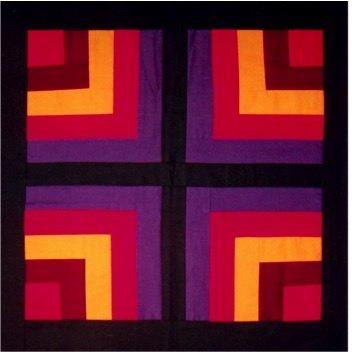
Detail of ‘Al Amish’
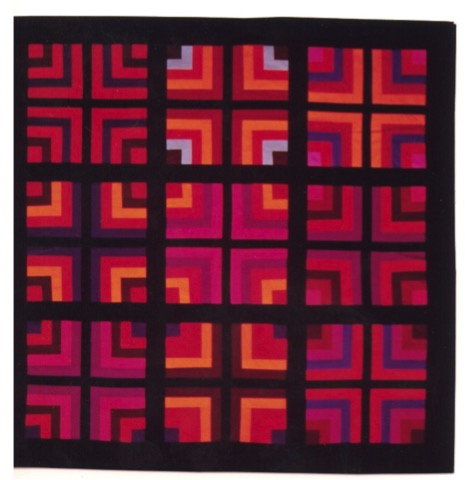
‘Al Amish’
In Ramallah the women worked incredibly hard – they were all to graduate as patchwork teachers after our one-month course, and it was important to them. They also worked brilliantly in teams with no concerns about who owned the piece that six women were making together. I cannot imagine that happening in the west. We only had two sewing machines in each class of twelve – so it was by far the quickest way to work. The teams were finishing tops in an hour and a half.
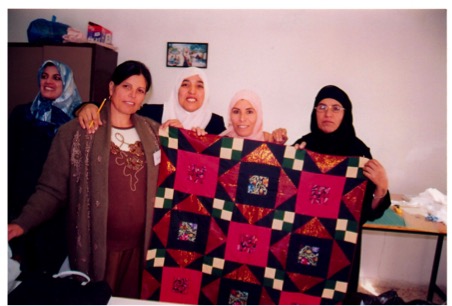
A small group with a finished top in Ramallah
How do you cope with language and interpretation when in other countries?
Even when I have a bit of a language I work with an interpreter. It can be challenging and I try to make sure they can also sew. One of these occasions turned into something wonderful. In Australia my husband had been working with the Centre for Defence and Strategic Studies. It was made clear that Australian wives were expected to do something for the wives of foreign generals on the course.
I announced a patchwork class and most of the twenty attended on the first week. By week five we were down to four. Three lasted a long time and one – a Thai friend who became one of my ‘sisters’ stayed all year. Vanida Navakul fell into patchwork as if she had been born to do it. Each week we met at her house. I taught patchwork and she showed me a new dish for a Thai lunch. I told her she had to go back to Thailand and teach – she was really gifted and hated the seamstress work she had been doing.
When I needed an interpreter in Thailand I asked for Vanida. I knew she had not started work in any way and was too shy to promote herself in patchwork. After a week of my classes I could see shop owners looking at her in amazement.
She was not just interpreting – she was moving around the classes helping students in Thai while I demonstrated in English. She had bookings for weeks at the end of it and now has a very successful business in Bangkok – with two long arm machines operating from her shops. It is a marvelous feeling knowing that for one of my dearest friends I really did teach her something that changed her life.
Expand on one of your many textile tours ‘Postcards from Cairo; Do you want to come to Syria and Egypt with me?
I LOVED doing these tours. They have stopped at the moment. Syria is out – for my lifetime at least. Egypt is struggling a little still and it is hard to entice people to go there even though it is probably fine. We limited numbers so we could all fit in a small bus and so I did not lose people in long walks through tiny alleys in suqs.
I ran three tours. The final one was two weeks before Egypt had its first revolution and the mobs were in Tahrir calling for Mubarak to resign – and he still had not when I decided to switch it into Jordan.
One of the best highlights was a night in the house of Widad Kawar, who is known as Umm l’ibas al-falastini—the mother of Palestinian dress. She wrote the following wonderful books and I particularly recommend Threads of Identity.
– Kawar, Widad: Threads of Identity: Preserving Palestinian Costume and Heritage ISBN 978-9963-610-41-9 Rimal Publications. 2011
– Kawar, Widad: Pracht Und Geheimnis – Kleidung Und Schmuck Aus Palästina Und Jordanien ISBN 3-923158-15-7 Rautenstrauch-Joest Museum Munich. 1987
– Kawar, Widad and Tania Nasir: Palestinian Embroidery : Traditional “Fallahi” Cross-Stitch ISBN 3-927270-04-0. Munich, State Museum of Ethnography. 1992.
– Widad Kawar and Shelagh Weir: Costumes and Wedding Customs in Bayt Dajan. “biography”. Kawar Arab Heritage Collection.
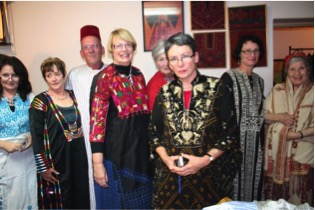
Widad Kawar and tour group
Widad dressed us all up in the costumes of different areas of Palestine. It was a really wonderful night – and she had seen us at incredibly short notice.
On another part of the trip in Syria between Palmyra and Damascus I had rung ahead and asked a tiny desert coffee truckstop to hold milking their sheep until we arrived so my travellers could see it.
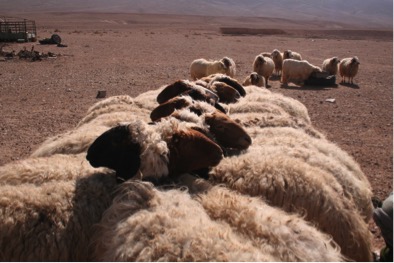
Although it had nothing to do with textiles it was mentioned by many as one of the great experiences of the trip.
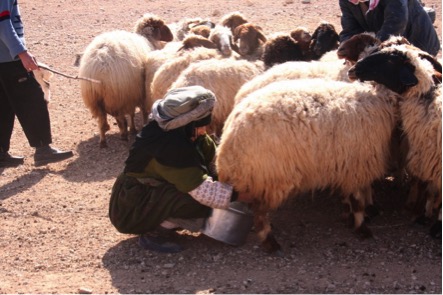
On earlier trips that were able to go to Egypt visits to Wissa Wassef Tapestry Project and the stitchers employed by the Anat Foundation in Syria who live in the tiny village area of were highlights.
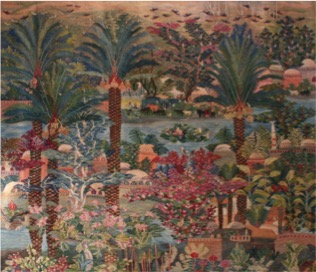
A Large Tapestry at Wissa Wassef
Wissa Wassef treats its weavers as artists. There is no pressure on them, they choose their own designs and subjects, and they are not pushed to work. Their work is spectacular.
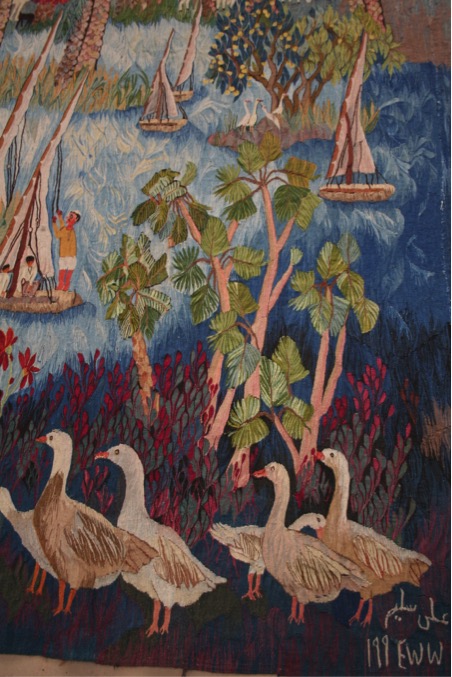
Detail of the tapestry
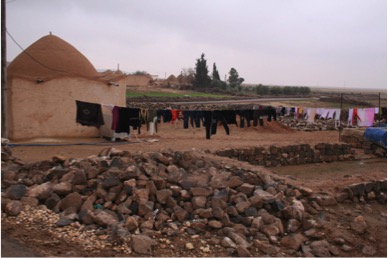
Jebel al Hoss
In Jebel al Hoss the women live with their families in mudbrick beehives. It is bleak country – freezing and windswept in Winter, and scorching and windswept in Summer. It is in the area we used to call a ‘plant and pray’ area. They do exquisite embroideries which are marketed as bags and clothing to the rich and privileged in Damascus – and worldwide.
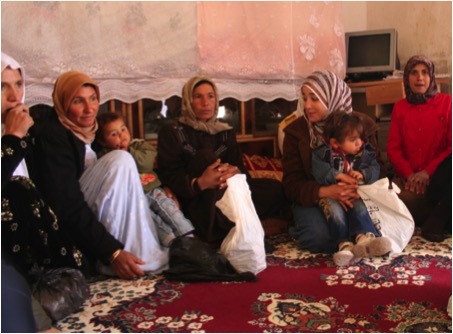
Can you explain ‘Sandstorm over White Dessert’?
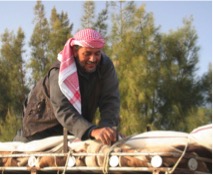
This quilt uses a combination of raw edged applique and simple piecing. Many of the fabrics are hand dyed or painted. Sandstorm over the White Desert is the sixth quilt in the series. Magdy Badrmany became a friend of ours while we lived in Egypt. He is a Bedouin guide in the White Desert and we were impressed by his professionalism, his driving skill, his sense of humour and the way he simply and quickly set up our camps and cooked wonderful food for us.
On one camping trip a sandstorm blew up on the horizon. We watched it approaching in some trepidation. I did not want sand in my SLR camera so I memorised the changes. I was fascinated as we watched the ominous approach, and saw the way the shadow of the storm changed the colours of the white desert. As we watched, creams and warm golds became silver and mauve.
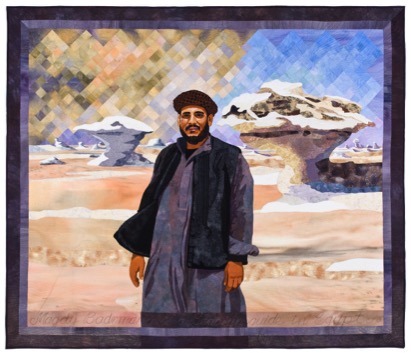
‘Sandstorm over the White Desert’
Magdy was calm and unworried – as always. I added a brief text in my own hand writing at the quilting stage, explaining very simply who Magdy was.
I made the quilt and sent Magdy a text to tell him to check his email. In Bahariya Oasis, where he lives, there was only one possible internet connection for him – the local coffee shop. In Egypt women do not go to coffee shops. I had sent two tiny picture files – one of the quilt with me in front of him so you could see that it was life sized and one of just the quilt.
Magdy took his wife. She wore full Nekeb to go there – a face cover with just slits for her eyes. As the images started to download – very slowly on the dial up modem – Magdy went to get coffee. Next thing she was hitting his shoulder.
When he asked why she pointed to the screen where it looked as if Magdy had his hand on my bottom – real me, quilted Magdy. Luckily the other image cleared things up. I realised why she did not realise it was a quilt – in the tiny file the pieced sky just looked pixelated.
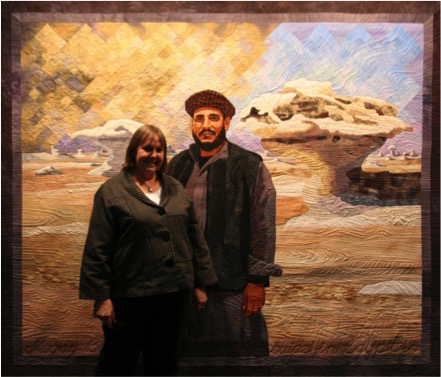
The offending image
Discuss your photographic technique to quilt making. Perhaps you can use ‘Mohamed Sa’ad – Caretaker of the Mosque’ to explain this technique?
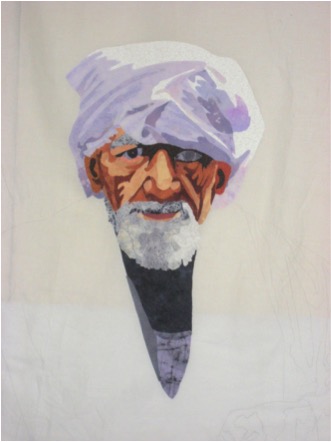
Detail, ‘Mohamaed Sa’ad.
I used composites of several photographs for this piece. The face had to be accurate, but I wanted to use him in front of the magnificent silver and bronze medallion on the mosque door.
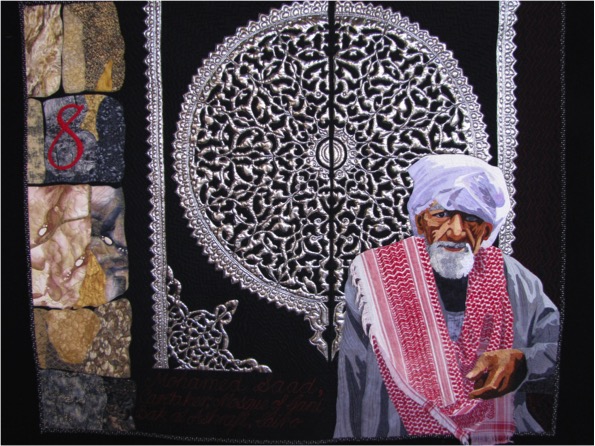
‘Mohamaed Sa’ad.
I traced different elements separately and put them together. I then make the drawings bigger, scaling some up more than others. I outline every different colour, not just every different value. These become pattern pieces for the raw edged applique. Each piece is matched to a piece of fabric, cut out and ironed down with a fusible webbing. Stitching holds it securely and adds a lot more linework. Then quilting adds another level. I do not want a quilted groove on each change of colours on his face – the quilting is contouring and often ignores the colour changes.
For the mosque door I pinned foiled jersey over the almost-finished quilted quilt. I stitched the lines of the intricate design, then cut it away with a soldering iron and restitched it.
Explain your project ‘The Tentmakers of Old Cairo’?
Our move to Egypt was the time I moved me into an orbit I already knew. In 1981 I had visited Egypt during the Gulf War. One of my strongest memories was a visit to the Street of the Tentmakers. The Street of the Tentmakers is colourful and vivid but the work is slowly dying as an art. It had lost its Egyptian audience as wealthy Egyptians wanted French tapestries, and poorer ones were just not interested.
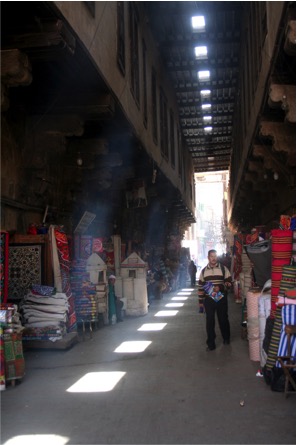
Street of the Tentmakers
The tentmakers are men who used to – and still do – make tents. However they are best known for the exquisite applique they use – and originally it formed the inside of every wall of a tent. They now use printed fake cloth for the tents as people are usually unwilling to pay for the full handmade applique. They make panels for people to hang in their homes, or to use as quilts. The work is made with solid coloured cottons, and it is ornate and beautiful.
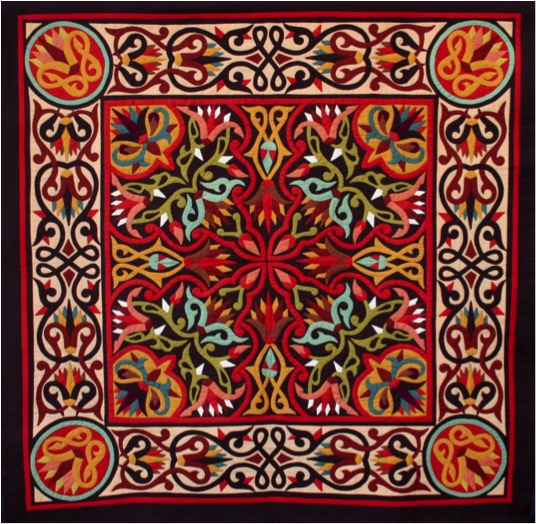
Textile by Wael
Subjects range from the purely decorative to calligraphy and storytelling.
Tarek Abouelenin explained to me that he and his company had invested fifteen years of savings to go to a Furniture Expo in Holland. They had completely failed to increase the business and companies who ordered wanted 3,000 piece in two weeks, and they just did not have the stitchers to do that.
As he was talking I was thinking – it is the wrong audience! You need to be seen by quilters or textile workers who understand exactly how wonderful you are and the difficulties of your work.
An invitation from Expertise Events to teach and speak at the AQC in Melbourne was the trigger. Judy Newman selected a talk about the Tentmakers, and Beutron offered to sponsor an exhibition space. I took two men – a translator to help to sell, and a master stitcher, Ahmed Naguib.
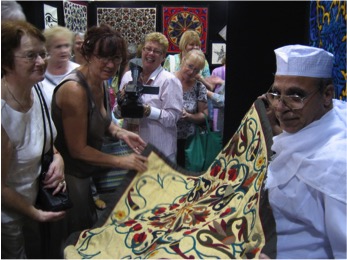
Ahmed Naguib at AQC in Melbourne
I knew Australians would be blown away by the work and it would sell like hot cakes. I had not expected the changes it brought back to the street in Cairo. Ahmed Naguib talked about how he was received, how people used video, how he was in the newspapers, how women clapped when he finished a flower – and I watched the street start to realise that what they did really mattered in a larger context.
They have now been to seven countries with exhibitions, and sometimes several times to each country.
Hany Abd el Khader, one of my friends in the Tentmakers’ Street made an applique piece to remember the first Egyptian Revolution. That was sold to the Museum of Oriental Art in Durham when we took it there for an exhibition at the University. It has a double historic importance – both far greater than anything I could make. It is work by an Egyptian about an Egyptian event of huge importance, and using a craft which has never been used by its workers for political commentary.
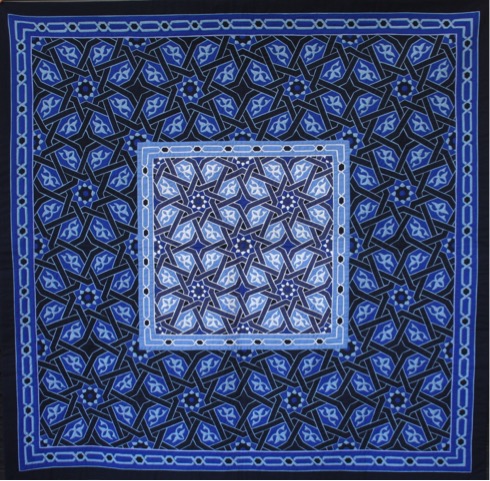
By Hosam
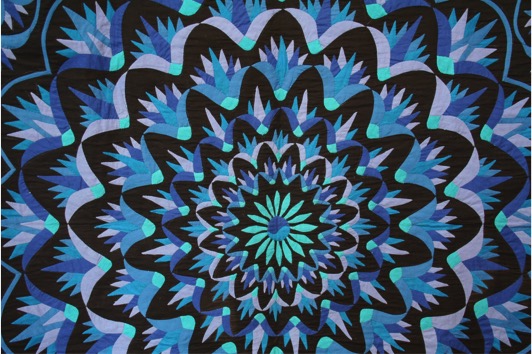
By Mohamed Dendon : Detail
Discuss colour and how you use hand painted fabrics and other techniques to achieve the colour you need in your quilts?
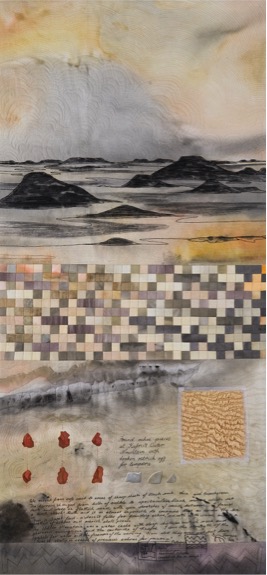
‘Water Mountail’
I tend to freshen and brighten colours for many pieces – that is just a matter of personal taste. It also has the effect of drawing attention from the softer greyed quilts around mine in a quilt show – so there is an element of deliberation to my colour choices.
I did a lot of the work when living in Egypt dyeing and painting of fabrics became a necessity. I could get large bolts of cheap white cotton, but never colours that I wanted. It was easier to buy whites and work from that, augmenting with other fabrics from my stash. I mix everything. Working in Ramallah and Iran told me that you use what you can get. Patchwork came from making do with what you had and we have almost forgotten this.
You are a member of tACTile, discuss the importance being a member of this group has been to you personally and professionally?
Working with tACTile has been very important to me. The group are good friends. The others are all so incredibly talented that I often wonder if I really belong there. We have had exhibitions every two years for the last twelve years. In each exhibition we have basically made our own work, but within a broad and elastic theme. There are times when I race towards deadlines swearing I will never do it again, but it has opened doors that would have stayed closed for me as a single quilter.
Discuss the importance that a quilt maker can be in capturing time and place?
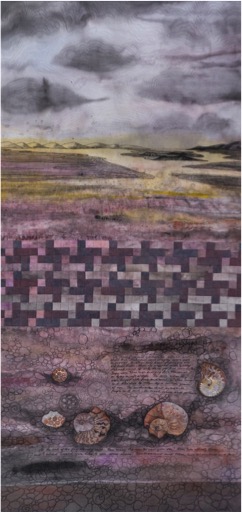
‘Ammoni’
I think that a Quiltmaker can be considered an artist in the way of other artists – it is only the medium that is different. Our work has significant advantages as I can fold twenty large quilts into a suitcase and carry them on a plane to an exhibition.
I think pictorial work of the kind I make can freeze a moment. However, decisions like choices of colour and patterning are subject to fashion and can lock the work into an era and that might not be such a good thing. I was looking the other day at advertising with men in bell bottoms and crocheted vests. We were laughing because they truly looked funny. It made wonder if my work will date in the same way.
Your husband’s Diplomatic placements; how have these helped you as a quilt maker?
I would not be a quilt maker if it were not for my husband’s career. When I married Bob I knew that I could not keep on working in electron microscopy. I drifted in the first postings – I taught kindergarten at the American School in Damascus, Syria, had two extra children in Kuala Lumpur, Malaysia, then started to study with a Palestinian painter in Amman, Jordan – and loved it.
finished a degree in Visual Arts just as my husband left to work with the UN in Gaza. I had done the degree with the intention of taking discreet groups of diplomatic wives into the landscape to learn to paint. I made a couple of quilts – for fun – and followed him to Jerusalem. Then there was a moment of realisation that quilting was simply a medium, that I could do anything with it that I could do with paint.
Textiles feel extraordinary to work with. People reach out to touch textiles and never do that to paint or photography. From the moment we are born we are wrapped in cloth. We step naked from the shower into cloth, we sleep between sheets, and blankets are used for warmth and comfort. There is an immediacy to textiles never found in paint. Colours are richer too as reflections do not usually affect fabric.
Our postings have also supplied me with incredible – sometimes unbelievable life experiences. Some find their way into my work, some I just hug to myself. The travel has supplied subject matter, though I only use places that mean a lot to me, not places I trip through briefly. I think the best art has to come from feelings – not just the idea that something looks pretty.
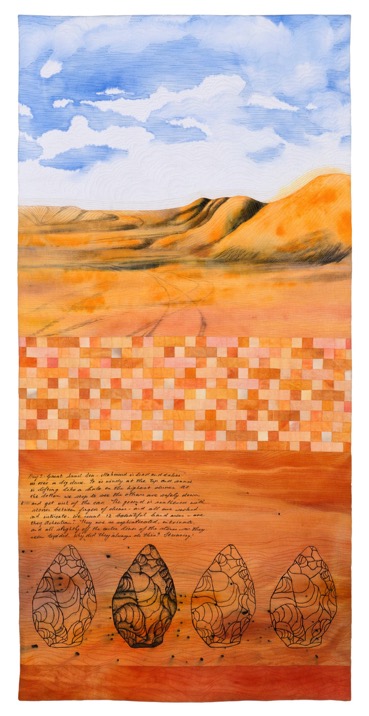
How has patchwork and quilting helped you when you have had to move to a new posting?
Yes – though there is always a period before the luggage arrives where I use the time to explore and get to know a new country. Moving to a new place can actually be devastating, regardless of how exciting it sounds.
I think we all have so many facets. We show a different side of ourselves to different people. My parents see me in one way, my children are shown another. I am a professional in the workplace with peers, somewhat subservient to my boss, a partner to my husband, and different again with female friends.
When you move – you are suddenly only a mother and wife. I have even been introduced as “The new Brenda Dodsworth” – naming the wife of the officer Bob had just replaced. It is a frightening loss of identity and I think you have to slowly replace each facet, finding people who see you in different ways. With my work I keep another facet throughout, and it gives me a sense of purpose in a brand new country where I am isolated by language, by the fact that I do not know anyone, and to a certain extent by my husband’s high status. He was the Australian Ambassador in the last few posts and an ambassador’s wife loses freedoms just because she is there with the representative of our country. You are never out of that role, regardless of where you go or who you are with. In our first posting with that title – day one – I turned at the checkout in a Jordanian supermarket and picked up my plastic bags of shopping. “No, said the owner. He said, “I have to talk to you.” He lead me to the restaurant part of the supermarket and ordered two coffees.
“In this country you are the wife of an ambassador. If you carry your groceries you are saying your country is rubbish. You can never, never do that here. When you shop you turn and walk out. You will know that your groceries will follow you.”
That was one of the hardest adjustments for an independent Australian to make – but during the next few years I heard enough gossip from Arab friends to know that I had been given great advice.
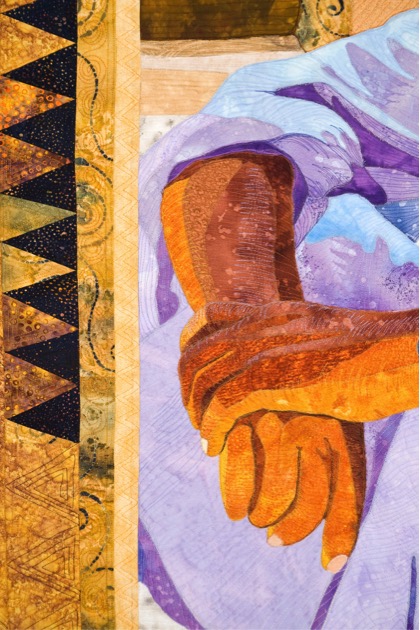
Hashim ; Detail – image by Patricia Boulton
Recently you have had issues with copyright, please explain what you have learnt about this aspect of artistic ownership?
Recently you have had issues with copyright, please explain what you have learnt about this aspect of artistic ownership?
I did so little. One of the quilts I had made back in 2002 was a traditional style of quilt. I had been in Singapore and a friend and I had shared a pile of sarongs which we cut up and divided. The front panel – or my half – of each sarong was so lovely that I did not want to cut it smaller. I designed a way to use triangles to make the pieces shimmer – and it helped quite unrelated prints to sit comfortably together.

A few years later I repeated the quilt in another lot of fabrics and it was so popular that I started to teach it as a class. Then I made two more. By this stage people were starting to copy it.
I was a bit miffed, as it looked traditional but it was not a known traditional block. People started to ask for patterns and I started – slowly and through chemo, to put a pattern together. A friend, Cassandra Philpot, spent several days with me taking process photographs to use in the pattern.
I never make patterns. Everything I teach is aimed at moving away from dependence on others’ designs, and making original work, so this was a very different path.
I negotiated with an Australian company to print it and do the distribution. And waited. Five months.
Then someone on a Facebook list posted the quilt they had made in a Shimmering Triangles class! I contacted the teacher and pointed out that she could not teach my design and my class without permission. She was nice – used the excuse that there was no pattern so she ‘had to write her own,’ but happily agreed to have her students buy mine in future.
Within two weeks I had withdrawn the pattern from the slow publisher, given copies to a group going on a quilting retreat who promised to test it, and after a few tweaks that they suggested I slammed it up on an internet selling site for crafts as a downloadable pdf file.
Then the real drama started.
A shop announced its BOM. This is a Block of the Month. Sales of these are almost infinite. Each month everyone who signs up gets a pack of fabric and instructions for that one section. By the end of eight months – or five or how long it takes – they have the whole quilt made. The shop can make a huge amount of money from this. They did not use my pattern – they cited my name and the fact that the first one was made in 2002 but said they had designed their own pattern from a Pinterest board.
I wrote a polite letter pointing out that this was a breach of copyright. No answer. I waited a month. Then the second advertising letter came out and they had removed my name and credit.
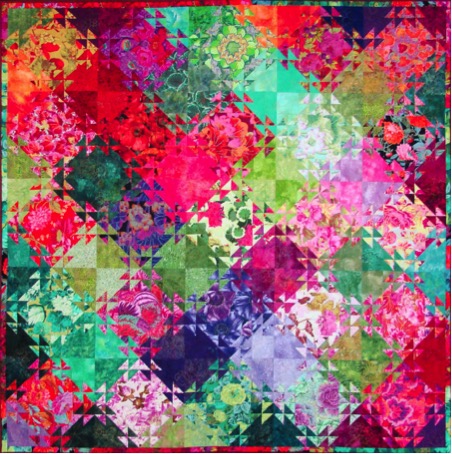
At this point I write a letter saying I was organising a Cease and Desist letter form a lawyer. I located a lawyer in the lady’s hometown and wrote to them.
I told two marvelous internet groups what was happening and they pulled in hard behind me. QuiltArt and SAQA are both offshoot chat lists for professional organisations – one from Quilts Inc in America, the other an international organisation centred in America called Studio Art Quilt Associates.
I named and shamed, but somewhat reluctantly as I was afraid of possible repercussions. Because they offered, I asked my friends to write a note or put a comment on the shop’s blog or Facebook page. Interestingly – Australia was blocked from the shop’s Facebook page. I asked people to stay cool, professional and accurate, and not to risk exaggeration or name-calling.
At the end of twenty four hours I stopped them as I was feeling sorry for the shop. I know they had hundreds of emails and comments and the owner had spent most of the day taking them off her blog as they appeared. Within half an hour of my stopping the emails the BOM was withdrawn with an apologetic note saying the maker did not realise that she could not draw her own pattern for an original quilt.
The internet really has incredible power. I was able to stop the lawyer letter before they had taken the top of the pen, and this did not cost me anything.
As a nice bonus – the pattern has been surprisingly successful – but that is another story!
Contact details.
Jenny Bowker
Email jenny.bowker@gmail.com
Website www.jennybowker.com
tACTile website http://www.tactilequilts.net/
Blurb book, Pack and Follow http://au.blurb.com/b/2578726-pack-and-follow
Pattern for Shimmering Triangles:
http://www.craftsy.com/pattern/quilting/home-decor/shimmering-triangles/122321
Jenny Bowker, Canberra, Australia
Interview by Deborah Blakeley, March, 2015
Think a colleague or friend could benefit from this interview?
Knowledge is one of the biggest assets in any business. So why not forward this on to your friends and colleagues so they too can start taking advantage of the insightful information the artist has given?
Other artists you may be interested in:


